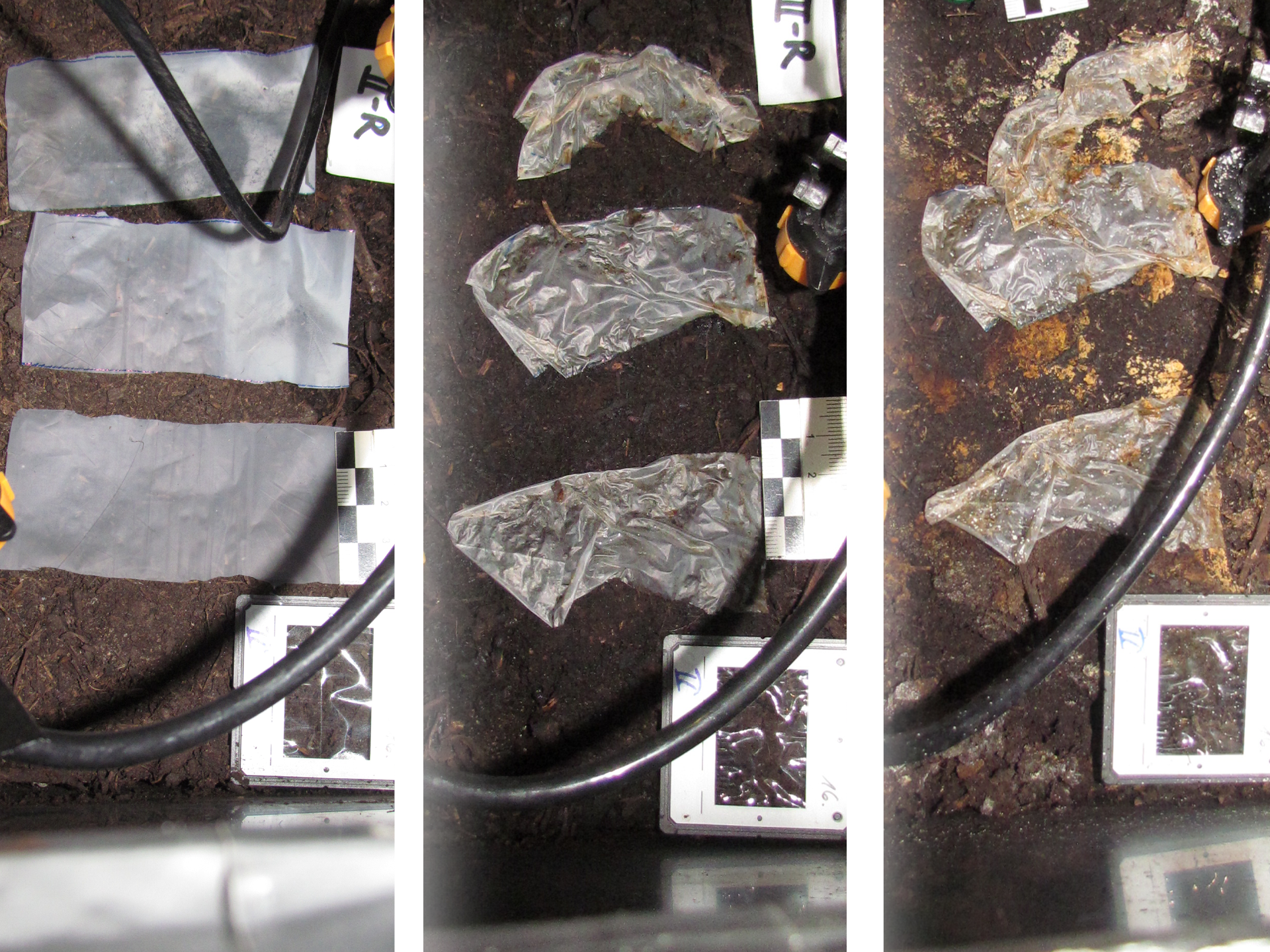Mulch films in use – What happens during degradation?

In addition to conventional ones, mulch films made of biodegradable plastics are increasingly being used in gardening and agriculture. CCPE researchers studied their degradation behavior under real environmental conditions and evaluated the influence of moisture, soil and UV light on the rate of degradation.
A biodegradable plastic product goes through three aging phases during its product life. The first phase is the utilization phase. It is characterized by the fullest possible functionality of the product. In the second phase, the so-called fragmentation takes place with the splitting of the polymer chains. Only when the polymer chains are short enough begins the final phase: The metabolization by microorganisms. Product properties can deteriorate significantly even before visible fragmentation.
In order to observe the degradation behavior of mulch films under conditions that are as realistic as possible, CCPE researchers at Fraunhofer UMSICHT developed a test stand for artificial aging of films on soils under the influence of UV radiation, controlled humidification and temperature. The innovative thing about this method: The test materials in the test stand are exposed to both - UV radiation and soil contact. This makes it possible to investigate the influence of both factors on the degradation behavior simultaneously. Previously established test methods only dealt with the exposure of the materials to UV radiation or to soil contact.
To validate the test stand, the researchers conducted aging tests of a biodegradable mulch film with and without UV radiation (wavelength 365 nm1, with components of visible light), with different soils (compost and garden soil) and at two different soil moistures. The degradation behavior of the test materials was continuously analyzed and evaluated optically (photo, digital microscopy2, SEM3), thermoanalytically (DSC4, TG4) and spectroscopically (FT-IR6). This was followed by a comprehensive literature review on the influence of UV radiation on the degradation behavior of polymeric materials in soils, which revealed partly contradictory statements on the degradation rate under the influence of UV radiation.
The newly obtained test results confirm that the higher biological activity in the compost and the higher soil moisture lead to a faster degradation of the mulch foil. In contrast, the UV radiation used slows down the rate of degradation. The test stand that has been developed is well established and is suitable for testing and evaluating all types of films for environmental applications that are exposed to soil.
Contact persons:
Research Department Circular Polymers
c/o Fraunhofer UMSICHT | Osterfelder Straße 3 | 46047 Oberhausen
Dr. Inna Bretz (inna.bretz@umsicht.fraunhofer.de, Tel. +49 208 8598-1313)
Pia Borelbach (pia.borelbach@umsicht.fraunhofer.de, Tel. +49 208 8598-1265)
_____________________________________________________________________________
1) Nanometers, 1 nm = 10-9 m
2) Digital microscope: display of the microscopic image as digital information on a monitor, instead of viewing through an eyepiece.
3) Scanning electron microscope: Use of an electron beam that systematically scans the sample by raster, thereby producing a topographical image of the sample surface as a result.
4) Differential scanning calorimetry: analysis method for thermal properties such as glass transition temperature, melting temperature and crystallization temperature of polymers.
5) Thermogravimetry: analysis method for physical phenomena such as phase transitions and for chemical phenomena such as thermal decomposition.
6) Fourier transform infrared spectrometer: Analysis method for the structure of single molecules and the composition of mixtures of molecules.